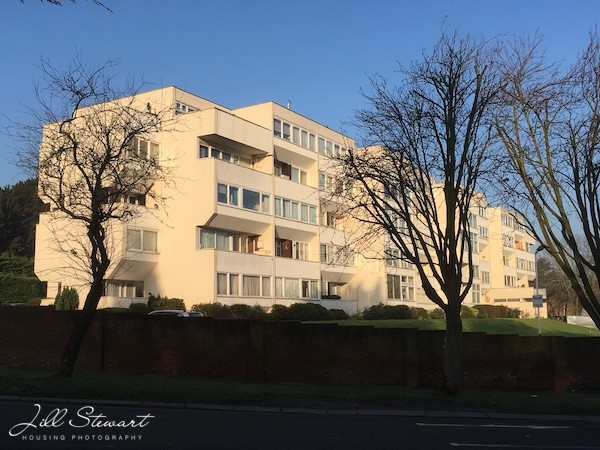
Jill’s interest in local history stems from her work with students on the Public Health and Environmental Health courses at Middlesex. Hendon has a fascinating range of housing types which reveal much about social, design and architectural history in just a few streets. Far from being a sleepy suburb, Hendon is a place of rapid change: one house (with a plaque) has now been demolished and replaced by flats; one office building was previously occupied by Property Guardians and a new office is now in situ; one very run down residential unit has been renovated and brought back into use. A walk around the area can tell us much about the constantly changing character of this corner of London.
Daniel Almshouses (1)
Opposite the Hendon campus the Daniel Almshouses in Church Street were originally constructed in 1737 under the Merchant Robert Daniel’s will.
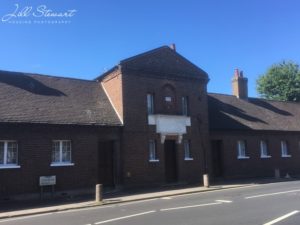
Almshouses are a form of charitable housing allocated to local poor people or those or associated with a particular trade in older age. Many almshouses exist across London and the rest of the UK. Almshouses are often set around communal gardens, as an architectural reminder of their link to older building types such as monastic cloisters. The front doors of each dwelling generally face inwards to the shared garden. However, the Daniel almshouses in Hendon face directly onto a busy Hendon road, Church Street. They are Grade II listed.
These Almshouses were intended for six men and four women who would received three shillings a week and a loaf of bread at Christmas. The Almshouses were renovated with money granted in 1892 on request of one of the trustees.
Rural Hendon: Church Farmhouse (2)
The Church Farmhouse on Greyhound Hill dates back to the 1688 but has been substantially adapted and changed ownership multiple times since. It retains some original features and is set in a pleasant garden.
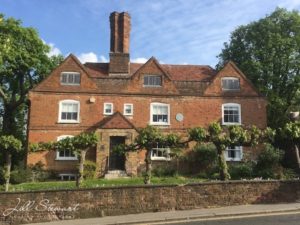
From country to town: Penfold House (3) and Model Farmhouse (4)
In the 1700s, some wealthier families had large houses built in Hendon away from city pollution. One example is Penfold House, Brent Street.

Hendon developed into a suburb largely as a result of railway links from the 1860s onwards. This both promoted it as a place to work and live and provided its boundaries.
In the late 1800s there were a range of middle class and working-class houses built, ranging from detached to terraced, some of which have since been listed. One example is the 1889 Model Farm House, now part of the Middlesex University Campus and directly opposite the Church Farmhouse noted above. The Model Farm House, situated near to the church, reminds us of Hendon’s agricultural past and rapid development since. Its milking parlour is Grade II listed.
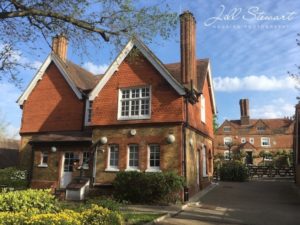
Suburban Housing
By 1923 Hendon was connected to central London by the London Underground and a growing network of roads, including the A1, A41 and North Circular.
Different type of housing developed rapidly in the growing suburbia offering some exclusive properties ranging from Arts & Crafts-inspired to those nodding toward modernist. Examples include the Grade II Listed White House in Downage (5)
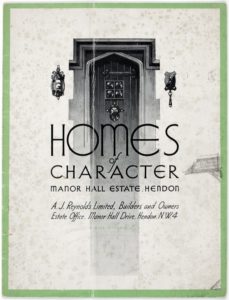
‘Homes of Character, Manor Hall Estate, Hendon, 1935
MoDA has several examples of interwar sales brochures appealing to a new middle class.
Suburban developers boasted ‘Homes of Character’, offering large, built to order, family homes set in a good environment.
For example the new (1935) Manor Hall Estate was described as “an exclusive and highly favoured residential district”. (6)
Low rise, landscaped Garden Flats were built near to Hendon Central underground station in 1938 at Edgeworth Close and Edgeworth Avenue. (7)
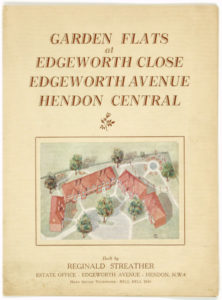
Garden Flats at Edgeworth Close, Hendon, 1938
After World War Two
One of the most striking of the modernist designs is the block of flats, Hendon Hall Court, Parson Street (1961-66), designed by brutalist architect Owen Luder.
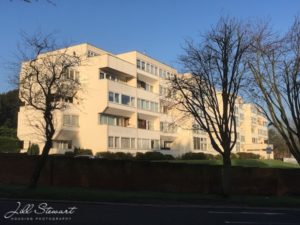
Despite its local significance and prominent position adjacent to the A1, there does not seem to be much information about this block. It sits adjacent to the much earlier Hendon Hall building. At the time of writing this was being converted into luxury Senior Living, further evidence of the area’s constant dynamic change.
We are grateful to Hugh Petrie, author of Hendon and Golders Green Past and Heritage (2005), Development Officer at London Borough of Barnet https://www.barnet.gov.uk/libraries/local-studies-and-archives for sharing his local knowledge.
Further Reading
Daniel’s Almshouses: http://ezitis.myzen.co.uk/daniel.html